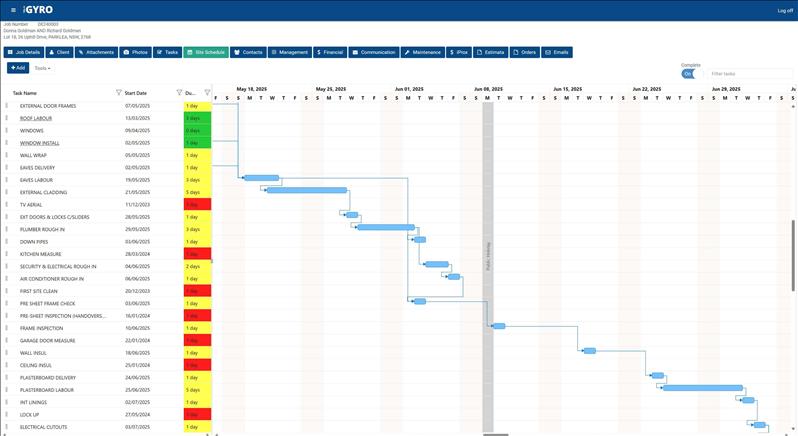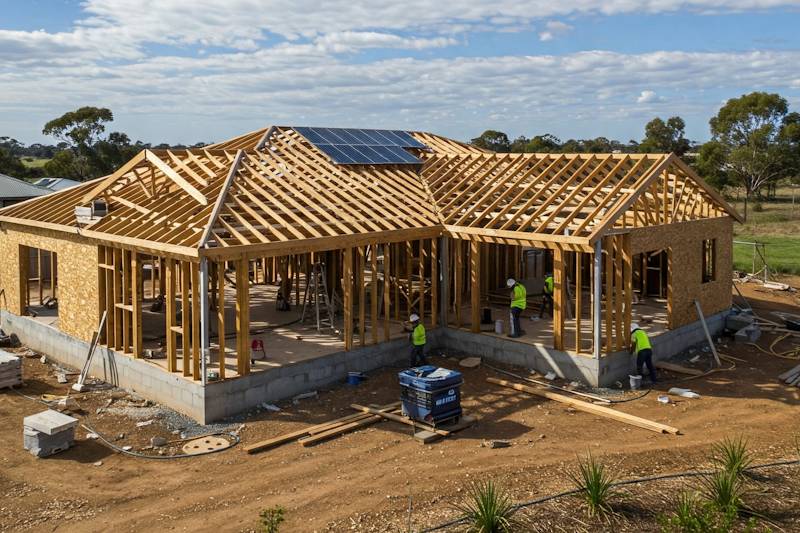Buildertrend Alternative
Buildertrend vs iGyro: A Comparison
When it comes to construction project management software, there are many options available to streamline operations, improve communication, and increase productivity. Buildertrend and iGyro are two such platforms that offer distinct features and capabilities. Let’s take a closer look at both to see how they stack up against each other.
1. Overview: What Are Buildertrend and iGyro?
Buildertrend
Buildertrend is a widely recognized construction management software designed for homebuilders, remodelers, and specialty contractors. It helps users manage projects from start to finish, offering tools for scheduling, budgeting, and client communication. With a strong focus on the residential construction industry, Buildertrend is often chosen by teams needing to collaborate in real-time on job sites.
iGyro Builders Management Software
iGyro on the other hand, is an emerging platform tailored specifically for the construction and building industry, offering solutions for managing project workflows with Gantt Charts, tracking expenses, and fostering communication across teams. Designed with Australian builders in mind, iGyro serves as a complete management system that integrates seamlessly with the Xero accounting package. It is ideal for builders of all sizes, including large franchise groups.
One of iGyro's standout features is its ability to help manage building franchise groups effectively. Additionally, the Accounts Payable module is a favorite among bookkeepers, as it supports a paperless system for comparing invoices with purchase orders. The invoice approval process also facilitates smoother collaboration between project managers and accounting teams.
2. Key Features Comparison
| Feature | Buildertrend | iGyro |
|---|---|---|
| Project Management | Task lists, project scheduling, timelines, and customizable workflows. | Full project tracking with real-time updates and automated reminders. |
| Collaboration Tools | Client communication, document sharing, and comment threads. | Real-time messaging and detailed project-specific comment sections. |
| Budgeting and Estimation | Built-in cost tracking and change order management. | Detailed budget breakdowns, material tracking, and financial reporting. |
| Mobile Access | Fully functional mobile app for Android and iOS. | Cloud-based access with mobile support, but may not be as robust on mobile. |
| Reporting and Analytics | Detailed reports for budget, schedule, and team performance. | Customizable reports, particularly useful for tracking project expenses and resource utilization. |
| Integration Capabilities | Integrates with various accounting, CRM, and ERP systems. | Strong integration with third-party financial tools, accounting systems, and communication platforms. |
| Customization | Limited customization options within predefined workflows. | Highly customizable based on user preferences and business-specific needs. |
3. Target Audience and Use Cases
Buildertrend
Buildertrend is a go-to solution for residential construction businesses in the US, especially those that manage a lot of clients. With its focus on homebuilders and remodelers, Buildertrend is optimized for those in the business of managing multiple residential projects with varying scopes and budgets.
iGyro
iGyro caters to businesses that need a more adaptable, scalable solution. It’s ideal for construction businesses that are expanding their operations, or for companies that need to track both large projects and ongoing maintenance work. Its modular approach allows it to be tailored to the specific needs of the business, making it suitable for a wide range of construction sectors, from residential to commercial builds.
4. Usability and Learning Curve
Buildertrend
Buildertrend provides a user-friendly interface with a moderate learning curve. Most users can get up to speed with the software in a short amount of time. However, some users may feel constrained by the software’s standardized workflow setup, which can take some time to get used to, especially for larger teams with complex requirements.
iGyro
iGyro’s flexible approach offers a more customizable experience, and a gentle learning curve. Since the platform allows for deep customization, you may find it useful to start off with a basic setup and customise to suit your business as you become familiar with the software. iGyro’s flexibility could be highly advantageous for businesses with specific needs that Buildertrend might not address as well.
5. Pricing Structure
Buildertrend
Buildertrend typically offers a subscription-based pricing model with tiered plans based on the size of the business and the features required. Pricing can vary, but Buildertrend is generally considered a premium solution in the industry.
iGyro
iGyro offers a more flexible pricing structure, allowing businesses to scale their usage up or down based on their needs. It may offer lower entry-level pricing for smaller businesses compared to Buildertrend, you only pay for the number of users in your account.
Buildertrend no longer publicly advertises its pricing structure. However, even on Buildertrend's mid-tier plan, you could potentially save up to $9,600 AUD per year based on a team of five iGyro users. In contrast, iGyro is an affordable option for smaller teams. As your business grows, iGyro can scale with you, offering an equally comprehensive solution at a fraction of the cost compared to Buildertrend.
6. Customer Support and Community
Buildertrend
While many users appreciate the responsiveness of Buildertrend's support team, it's worth noting that Buildertrend’s support is US-based, which may result in timing challenges for users in other regions such as Australia.
iGyro
iGyro offers exceptional customer support, with a focus on providing fast and effective solutions to users. The platform is designed to ensure that any issues are resolved quickly, and users have access to a comprehensive range of online resources for self-help. Additionally, iGyro’s dedicated support team is available during Australian-based hours, ensuring timely assistance for local users and minimizing any time zone challenges. This localized support makes it easier for businesses to get the help they need when they need it.
7. Pros and Cons
Buildertrend
Pros:
Comprehensive feature set for project management, including scheduling, budget tracking, and client communication.
Strong mobile support for on-the-go teams.
Well-established in the industry with a proven track record.
Cons:
Limited customization options compared to some competitors.
Pricing may be higher for small businesses or those with less complex needs.
iGyro
Pros:
Highly customizable.
Great for businesses that need flexibility and scalability.
Built and designed for Australian builders.
Cons:
Smaller user base and potentially fewer established industry reviews.
8. Conclusion
Both Buildertrend and iGyro offer valuable features for managing construction projects, but the choice between the two ultimately depends on the specific needs of your business.
If you need a well-established platform that’s easy to implement and offers a comprehensive range of features out-of-the-box, Buildertrend may be the right choice. Its focus on residential construction and its proven track record make it a reliable option for homebuilders and remodelers.
However, if you are looking for a flexible, customizable and affordable platform that can scale with your business, iGyro might be the better fit. Its unique user based subscriptions make it ideal for businesses that need to keep costs low and scale as their business grows.
iGyro stands out with its franchise group management features, which are second to none. These specialized tools are designed to help businesses manage multiple locations and streamline communication across franchise groups. Unlike Buildertrend, which does not offer similar functionality, iGyro’s features are tailored to the unique needs of franchise operations, making it an ideal solution for large franchise groups in the construction industry.
Both platforms offer powerful tools to manage projects efficiently, but the decision comes down to your business's growth stage, customization needs, and budget.




